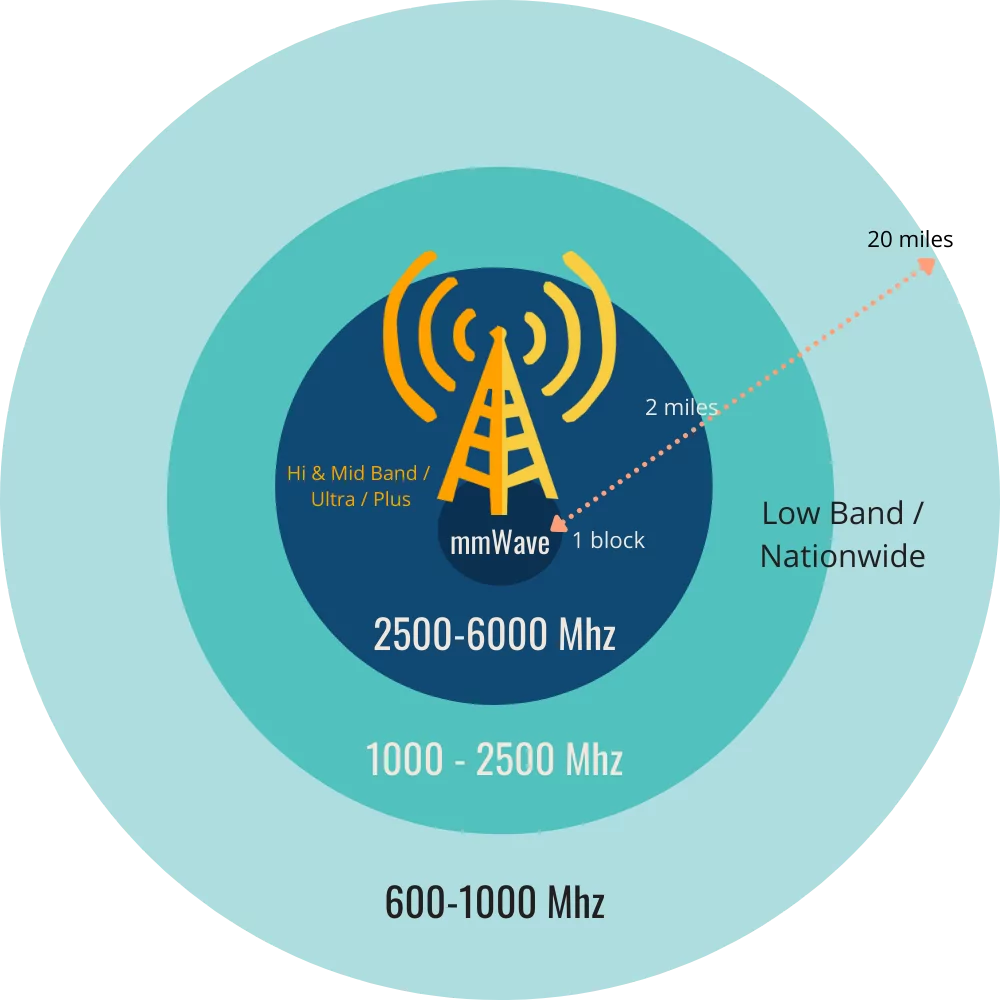Network upgrades, wireless strategy, and a spectrum fight with real stakes
The U.S. wireless mobility race is picking up speed — literally. AT&T lit up its new EchoStar spectrum across thousands of towers. The upgrade brings faster 5G, stronger fixed-wireless broadband, and competitive assertions against T-Mobile and Verizon.
AT&T says this new 3.45GHz block lifts mobile speeds by as much as 80%. Home internet speeds rose too. The carrier activated the band across 23,000 sites in only a few weeks. And all of this, months after AT&T paid $23 billion for the leases that Boost Mobile’s parent, EchoStar, once held.
The activation redraws the spectrum map. It also pressures rivals, bolsters fixed-wireless markets, and introduces questions about EchoStar’s money, timing, and long-term strategy.
What’s Happening & Why This Matters
AT&T activates its new mid-band spectrum

AT&T switched on its new 3.45GHz block, tying it into its C-band footprint. The carrier says the mid-band pairing opens headroom for speed and consistency during peak traffic. It also says 5G phones with newer modems already tap into the faster channel.
The carrier stresses reach. The upgrade touches 48 states. Only Alaska and Hawaii sit out. AT&T also says its network teams finish this work fast because the company already relies on this band heavily across its existing markets.
EchoStar’s Boost Mobile struggles aid the sale
EchoStar bought Boost Mobile from T-Mobile during the Sprint merger. Regulators wanted a fourth national carrier. Boost started well. It passed early coverage deadlines. Tests even showed fast service in New York and other cities.
Then the money collapsed. EchoStar warned investors that the business carried “substantial doubt” about its future. The warning initiated a strain. Boost held valuable spectrum that it barely used. FCC leadership questioned the company’s strategy and its long string of unused assets.
The sale to AT&T brought quick cash to EchoStar. It also created a jump-start for AT&T’s mid-band network.
SpaceX scoops up EchoStar spectrum too
While AT&T grabbed the 3.45GHz slice, SpaceX quietly grabs other EchoStar pieces for Starlink. The space gazer bought spectrum in two separate deals. Starlink ventured deeper into satellite-to-cell plans.
The new range pressures cable firms, regional wireless carriers, and rural broadband operators. The more spectrum Starlink controls, the more competitive its direct-to-device play is.
FWA gets a boost as AT&T grows “Internet Air”
AT&T also points to its home broadband product: AT&T Internet Air. The new spectrum helps Air cover more homes. It also allows AT&T to pitch Air as a bridge product for suburban neighborhoods that lack fiber.

COO Jeff McElfresh says the spectrum “gives us the runway” to bring Air to more homes and businesses. Air launched two summers ago, late compared to T-Mobile Home Internet and Verizon Home 5G, yet it is gaining traction as the fastest-growing part of U.S. broadband.
FWA is growing fast because customers want simple installs and predictable pricing. Cable churn is real. And AT&T sees Air as a feeder that funnels customers toward its fiber lines when construction reaches those homes.
TF Summary: What’s Next
AT&T’s activation with EchoStar spectrum is amping up an already hot race in U.S. wireless markets. The company boosts speed, adds capacity, and strengthens its home-internet strategy. EchoStar exits a heavy lift — Starlink gains strategic spectrum. And the FCC’s long quest for a fourth carrier remains unfufilled.
MY FORECAST: Mid-band pressure intensifies. AT&T uses its new spectrum to carve an advantage in dense cities and suburban pockets. T-Mobile answers with its own deep 2.5GHz holdings. Verizon tries to widen its C-band footprint. Cable firms lean harder on MVNO deals. And Starlink is the next national threat through direct-to-device plans.
— Text-to-Speech (TTS) provided by gspeech


